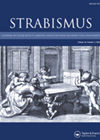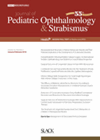
Journal Reviews
Choroid and retinal changes post COVID-19
The authors aimed to evaluate choroid and inner neural layers in people previously recovered from Covid-19 compared to healthy controls using optical coherence tomography (OCT) over a six-month period. They recruited 96 people: 56 with Covid-19 at least three months...
Female participation at the AAO conference
This study sought to understand whether female participation among paediatric ophthalmologists at the American Academy of Ophthalmology (AAO) annual meeting resembles the sex distribution of the field as well as whether the Covid-19 pandemic significantly affected female involvement. From 2018–2022,...
No risk of dry eye disease in concomitant strabismus cases
This preliminary assessment of the ocular surface of patients with concomitant strabismus before surgery was undertaken to determine if the presence of strabismus increases the risk of dry eye disease. This was a cross-sectional study of 204 patients with concomitant...
Types of nystagmus and associations in a large international database for nystagmus
The authors aimed to characterise a large international cohort of children with nystagmus. Data were taken from a prospective database which was started in 2010. Up to 2020, this contained 1774 patients with nystagmus from 38 US states and 30...
MPH treatment effect in ADHD on choroidal vascular index
In this study the authors aimed to investigate the choroidal vascular index (CVI) in treatment-free children with ADHD, children regularly taking methylphenidate (MPH) and healthy controls. This was a prospective cross-sectional study of 52 patients with newly diagnosed ADHD, 46...
Lean concept implementation process to improve clinic efficiency
The authors adopted a Lean concept to improve patient wait times, delays, clinic inefficiencies and patient satisfaction. They report the outcomes of implementation in this paper. Visit time, and patient and staff movements during patient examinations were mapped. Patient examinations...
Use of Leflunomide as a treatment for paediatric chronic uveitis
Leflunomide is a disease modifying anti-rheumatic drug approved for treatment of rheumatoid arthritis and psoriatic arthritis in adult patients. This study reports five illustrative case reports of children using Leflunomide as an adjunct treatment with anti-tumour necrosis factor (TNF) agents...
Treatment of progressive keratoconus
This study aimed to analyse the clinical results of accelerated iontophoresis-assisted epithelium corneal cross-linking (i-ON CXL) to evaluate the risk factors for keratoconus progression after treatment, and the safety and efficacy of re-treatment using epithelium-off CXL protocol in paediatric patients....
Characteristics of cherry red spot on optical coherence tomography
In this study the authors report optical coherence tomography (OCT) characteristics of cherry red spot from three cases of Tay-Sachs and one case of Niemann Pick diseases to determine associated factors and potential visual implications. This was a retrospective case...
Rate and predisposing factors for post-vitrectomy cataract formation in children
This study was a retrospective analysis of post-vitrectomy cataract formation in the general paediatric population. The authors aimed to determine the number of phakic children needing cataract surgery after vitrectomy surgery and related perioperative factors. The study was a 10-year...
Normative reference values for optic nerve sheath diameter in children
The purpose of this study was to measure optic nerve sheath diameter (ONSD) in paediatric patients without pathology using brain CT performed for various reasons and to provide normal tomographic reference values. This was a retrospective study of CT scans...
Infantile nystagmus syndrome and use of genetic testing
This review aimed to assess the clinical utility of genetic testing for individuals with infantile nystagmus syndrome. The authors define infantile nystagmus syndrome as having an onset before six months of age, binocular and conjugate. The literature search was conducted...







